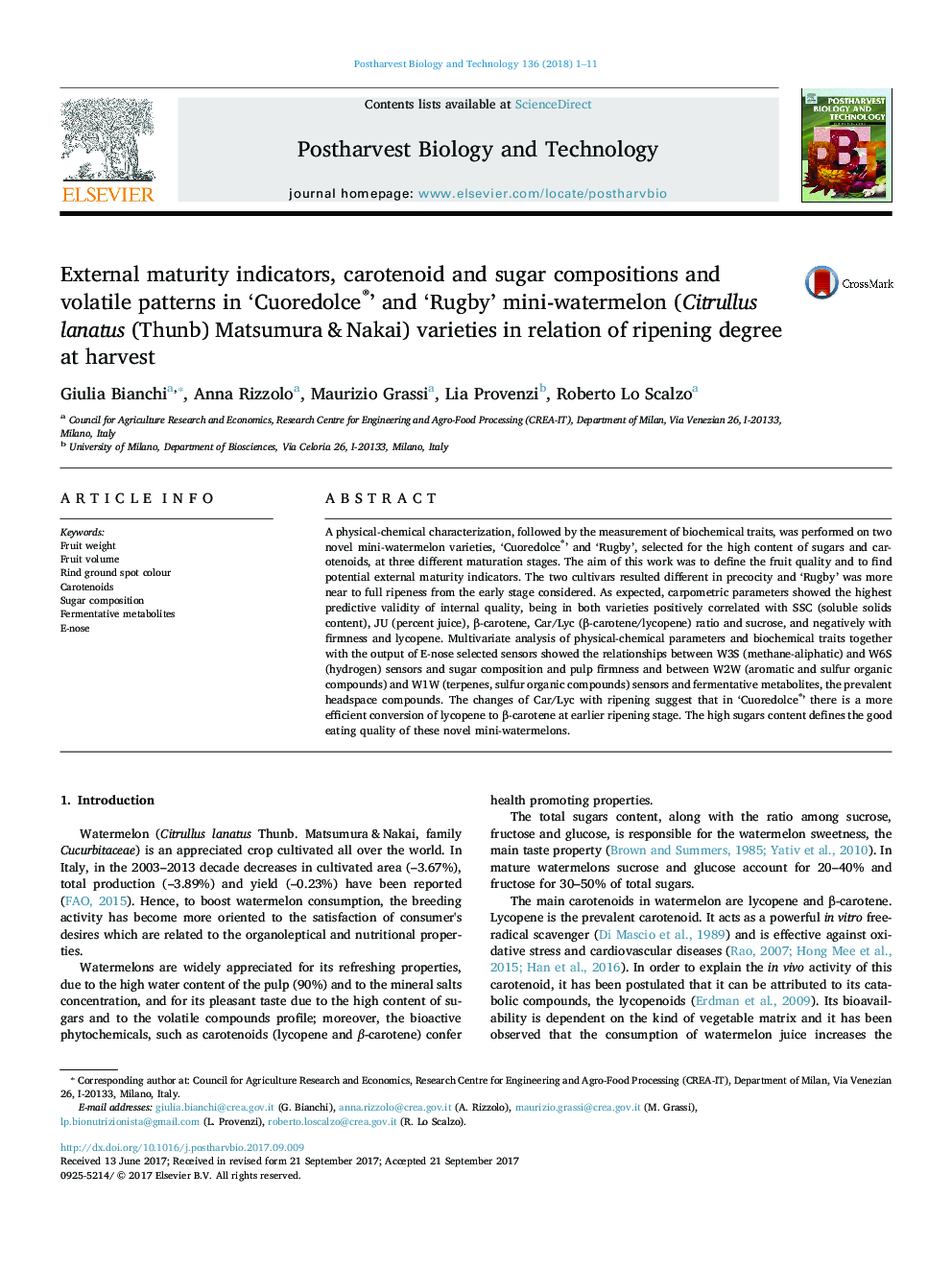| Article ID | Journal | Published Year | Pages | File Type |
|---|---|---|---|---|
| 5762740 | Postharvest Biology and Technology | 2018 | 11 Pages |
Abstract
A physical-chemical characterization, followed by the measurement of biochemical traits, was performed on two novel mini-watermelon varieties, 'Cuoredolce®' and 'Rugby', selected for the high content of sugars and carotenoids, at three different maturation stages. The aim of this work was to define the fruit quality and to find potential external maturity indicators. The two cultivars resulted different in precocity and 'Rugby' was more near to full ripeness from the early stage considered. As expected, carpometric parameters showed the highest predictive validity of internal quality, being in both varieties positively correlated with SSC (soluble solids content), JU (percent juice), β-carotene, Car/Lyc (β-carotene/lycopene) ratio and sucrose, and negatively with firmness and lycopene. Multivariate analysis of physical-chemical parameters and biochemical traits together with the output of E-nose selected sensors showed the relationships between W3S (methane-aliphatic) and W6S (hydrogen) sensors and sugar composition and pulp firmness and between W2W (aromatic and sulfur organic compounds) and W1W (terpenes, sulfur organic compounds) sensors and fermentative metabolites, the prevalent headspace compounds. The changes of Car/Lyc with ripening suggest that in 'Cuoredolce®' there is a more efficient conversion of lycopene to β-carotene at earlier ripening stage. The high sugars content defines the good eating quality of these novel mini-watermelons.
Related Topics
Life Sciences
Agricultural and Biological Sciences
Agronomy and Crop Science
Authors
Giulia Bianchi, Anna Rizzolo, Maurizio Grassi, Lia Provenzi, Roberto Lo Scalzo,
